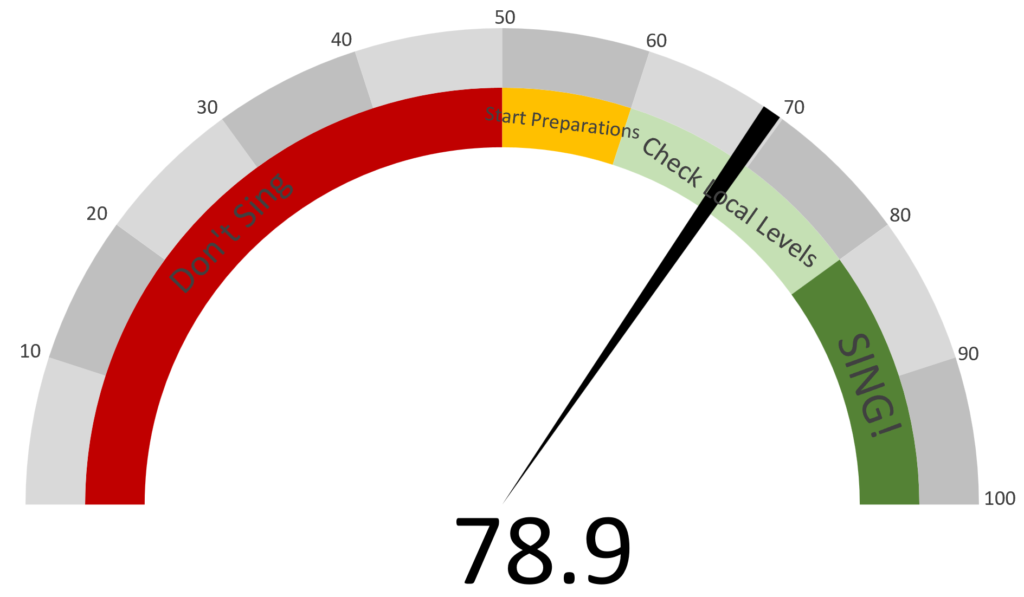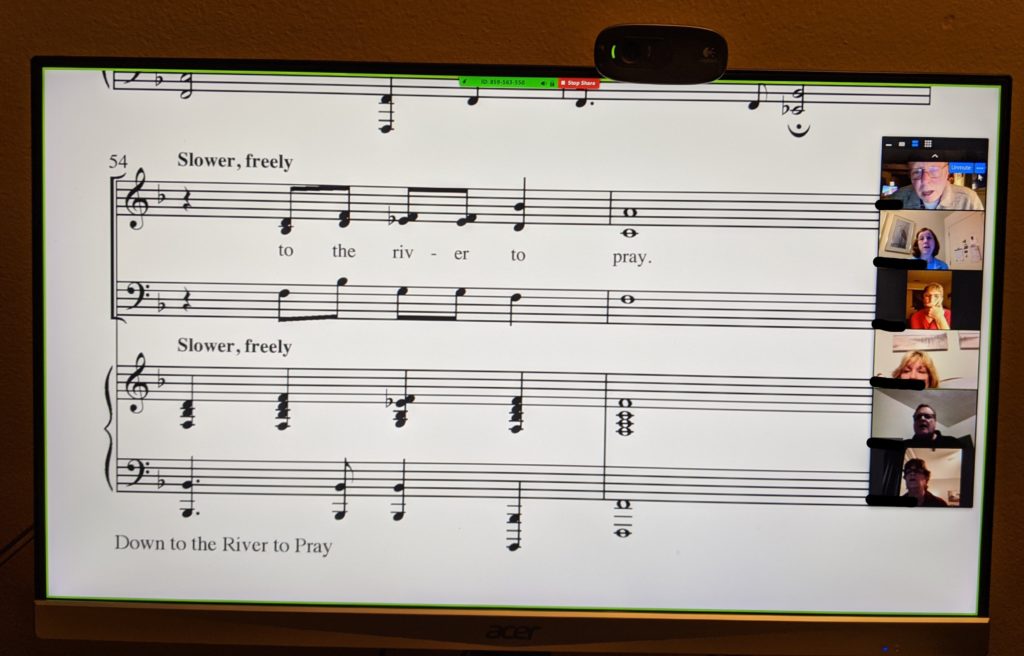The CDC released updated guidelines yesterday (Thursday, August 11th, 2022). Below are the links to the newest information we’re aware of and our renewed recommendations concerning congregational singing.
RECENT CDC UPDATE LINKS
CDC streamlines COVID-19 guidance – CDC is streamlining its COVID-19 guidance to help people better understand their risk, how to protect themselves and others, what actions to take if exposed to COVID-19, and what actions to take if they are sick or test positive for the virus.
Recommended Questions You Should Ask
The Hymn Society’s Underlying Principles & Assumptions
- Our recommendations are designed for congregations within the United States with a specific focus on congregational singing. These recommendations do not directly relate to solo or choral singing.
- We are a multi-national ecumenical organization with a relatively small staff. We cannot make recommendations specific to each local congregation within our reach or influence. Our recommendations must be made within a large context and should not replace the need for local committees or working groups to do what is right/best for their local community.
- The science and therefore our recommendations are constantly shifting due to new available studies, updated data, and revised guidelines from the WHO, CDC, and other scientific entities. We do our best to review all updates and studies available to the public but have no “inside” access or knowledge other than what is publicly available.
- As an organization founded on faith, our decision making and recommendations must incorporate theology along with the current science. This theology is based on the core biblical tenet that the command to “love your neighbor” is inseparable from the command to “love God.”
- There are no “no-risk” situations when a congregation currently gathers. If your congregation is considering or already gathering (regardless of whether you’re singing together), you are assuming some risk. What our guidance is designed to do is to walk you through assessing your risk and risk-tolerance.
Questions to Ask:
The answers to the following questions for your congregation can be used as a guide for determining how much risk is involved in deciding to sing as a congregation:
What percentage of your congregation is fully vaccinated (“fully vaccinated” definition is here)?
- Definitely 70% or higher = Lower Risk
- Less than 70% = Higher Risk
- I don’t know = Assume Higher Risk
How much distance can you ensure between each congregation member (or pods such as a family unit)?
- Six feet in all directions = Lower Risk
- Less than six feet in all directions = Higher Risk
- I don’t know = Assume Higher Risk
What are the chances that someone unvaccinated will attend but also remain unmasked and un-distanced?
- I know when there’s a visitor and we’re happy to ask them directly whether they are vaccinated = Lower Risk
- There’s a good chance because I can’t control or monitor all our visitors = Higher Risk
- I don’t know = Assume Higher Risk
For those who should remain masked, are they using a proper mask that is well-fitted?
- I’ve never seen someone in our congregation wearing their mask improperly = Lower Risk
- We don’t or won’t monitor and correct congregants on proper mask usage = Higher Risk
- I don’t know = Assume Higher Risk
How many air exchanges (using outside and/or filtered air) per hour does the room you’ll be worshiping in have?
- Three changes or more per hour = Lower Risk
- Less than three changes per hour = Higher Risk
- I don’t know = Assume Higher Risk
How long will you be in the room together?
- 30 minutes or less = Lower Risk
- 60 minutes or more = Higher Risk
- I don’t know = Assume Higher Risk
If you and your congregation can answer the questions above all in the “Lower Risk” category, then you are assuming the smallest risk possible for COVID-19 spreading by way of your gathering. However, there is still risk.
With each question that you answer in the “Higher Risk” category, the chances of someone in your congregation spreading/contracting COVID-19 by way of your gathering increases.
So, after assessing your risk level, the question to be answered is: Is singing together worth _____ amount of risk for our congregation?
The Hymn Society’s Recommendation
With careful consideration of your community’s risk factors, we recommend that congregations resume singing (masking is still highly recommended).
Notes:
- The CDC still indicates that for unvaccinated people gathering and singing together is a high risk activity.
- 103,000 new cases are still being reported daily in the U.S.
- Worship services are by their very nature public events which include a number of variables that, depending on how each variable plays out, can quickly change the risk-factors involved in a gathering.
- The CDC guidelines for Communities of Faith | CDC are being updated but are not complete as of today, August 12th, 2022.
- For any public group that does sing, wearing a mask will reduce the risk of spreading infection.




 Blogger Brian Hehn is the Director of
Blogger Brian Hehn is the Director of 
